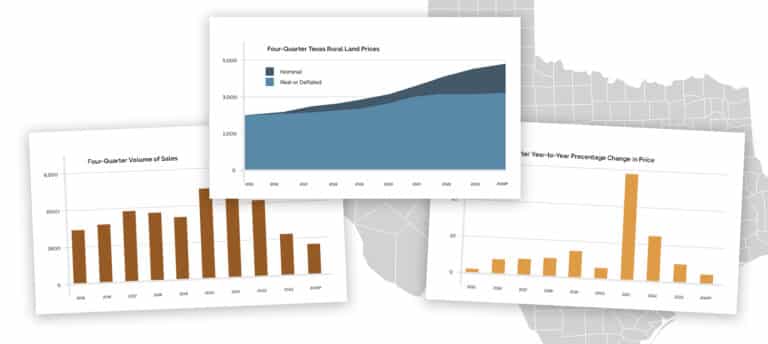
As I have mentioned in the past, I am a big fan of many classic western movies. One of my favorites is El Dorado. How can you not like a movie starring John Wayne and Robert Mitchum. And James Caan and Arthur Hunnicutt. And more importantly, the amazing Charlene Holt and the cutest Carey of them all, Michelle. And the golden throat of George Alexander singing the theme song. But maybe the best part of the movie was when the main bad guy Lou Grant, I mean Ed Asner gets his at the end.
He actually deserved worse when you consider how terribly he treated Mary Richards on the Mary Tyler Moore Show eight decades later. So why am a talking about this movie in a great real estate magazine? The reason is because I see much about the movie in today’s land market.
In El Dorado, the bad guys were trying to take the McDonalds’ ranch away from them and I see similar situations today. As most in real estate are keenly aware, Congress is looking into the idea of changing IRC Section 1031. No one knows exactly what they are thinking but my money is definitely on Congress to mess things up. I have seen where there is talk of placing a one million dollar cap on exchanges to eliminating Section 1031 completely.
Any changes made will not be to the benefit of landowners but rather the U.S. Treasury… and that’s not right. So what can landowners who have worked the land with their own hands seven days a week to bring value to their land, take more risks than any occupation that doesn’t include crabbing in the Bering Sea and buy everything retail and have to sell wholesale and pay the freight both ways (quote by JFK) do if 1031 exchanges are changed?
I will admit that I am no John Wayne, Robert Mitchum or James Caan but I might make a good Bull (Arthur Hunnicutt) and his horn. That’s because I am here to tell you that there are options to a 1031 exchange and in some ways, even a better option than a 1031 itself. The answer can be found in IRC Section 453. It is not my intent to go into Section 453 but rather how it can be used as a great 1031 option.
Although Section 1031 has been used successfully for decades, there are pitfalls that have prevented exchanges from being completed. For example, once the property was sold, there was a 45-day period to find another property. If you couldn’t find another property in 45 days, the 1031 ended and became taxable. There is no 45-day period with our Section 453 tax deferral strategies.
What if you found a great property in 45 days but couldn’t get the property closed in the 180-day period? The 1031 can’t be completed and the failed exchange becomes taxable. There is no 180-day period with Section 453.
Utilizing Section 453, there are no 45- and 180-day periods, there are no loan to value ratios to be concerned about and the property owner can sell his/her property and buy any property at any time in the future. Sounds like something Bull would blow his horn over.
Another situation that we have found with 1031 exchanges occurs when there are multiple owners and of course, they all want to sell and do something different. One or more of them wants to defer taxes utilizing another 1031 and one or more wants to take the money and run. No problem for us. The sellers that want to take the money and run can do so and the sellers that want to defer taxes can do so using our Section 453 tax deferral strategies.
Since I seem to be on a roll, let’s look at some other tax deferral opportunities that property owners can benefit from by utilizing Section 453. First, many land owners own property that will eventually become their retirement plan. At some point in time, the land owner would like to sell, retire and move closer to their grandchildren so they can spoil them in an effort to get even with their kids for being so rotten when they were growing up.
The problem for the land owners to do so could be taxes when they sell their property. For example, let’s say for sake of discussion that the property has been in the family for 60+ years and almost all of the sales proceeds will be considered to be capital gains. When taking into account the 20 percent capital gains tax, the five to ten percent state tax in 43 states and depreciation recapture of 25 percent, that could mean a tax rate of roughly 30 percent on the sales proceeds and that could be an obstacle to selling the property. Section 453 can defer those taxes and provide the land owners when they retire with a larger retirement plan which can be passed on to their heirs if they so desire. Hide the grandkids!
Many land owners are not aware that they can defer their capital gains taxes and retire using Section 453, so quite a few land owners decide to use the stepped-up basis to eliminate their capital gains tax liability. This may be a good strategy but there are pitfalls here as well.
For example, no one knows how long the stepped-up basis will remain as part of the tax code if Congress decides to take a look at it. In addition, what will the market value for that property be at that point in time. It could be double the current market value or it could be 20 percent less. And maybe most importantly, the stepped up basis has nothing to do with the federal estate tax if it’s applicable to the situation and can be far more devastating to the family than avoiding capital gains tax.
Section 453 may be a great option. The land owner can sell now, defer taxes now, generate about a six percent appreciation every year into your savings account on the sales proceeds and there may be estate planning opportunities for the families as well. Of course, each situation needs to be looked at separately but the opportunity may be there.
Another opportunity that may present itself is when selling a great high-end residential property. A 1031 is not appropriate for a residential property but if the sale of a great residential property will create a large tax liability, we may be able to defer the capital gains tax and the state tax on the sales proceeds.
A lot of U.S. citizens own property in a foreign country. That property could be a hunting property in South Africa to a ranch in Argentina to a great fishing property in Norway. Whenever a U.S. citizen sells a property even in a foreign country, there is a U.S. capital gains tax to be paid if one is generated. We can defer those U.S. capital gains tax. So if your family has owned a castle in Germany on the Rhine River for the past 400 years, we can defer the U.S. capital gains tax on that sale. If you own property somewhere in Middle Earth, good luck!
Although at this moment, no one knows what Congress is going to do, here is a sobering thought. Grover Norquist of Americans for Tax Reform believes that it would be a mistake to make any changes in Section 1031 but he cautions that Congress is taking a hard look and there could be changes made and those changes will not be positive for land owners.
One of my current concerns is that no one seems to have any ideas what to do if Section 1031 is dramatically changed or repealed. The big qualified intermediaries seem to have no Plan B if this happens.
I am not one to toot my own horn but maybe Bull will toot his for me. I hope that Congress has the good sense to leave 1031 exchanges alone but if not and even if they do, Section 453 provides much-needed flexibility for the land owner. Maybe its time you get to determine how you will sell your property instead of having to jump through IRS hoops.
Now go sell a great property and do it your way. Keep those taxes in your pocket for the benefit of you and your family and not give them to some member of Congress who will send your tax dollars to his district for a useless pork project and I don’t mean buying some hogs.

